ViDi is participating in the Spring 2025 programme of the international online seminar series “Cultura de la Pantalla”

Inhabiting uncertainty. A forum on qualitative, quantitative and visual methods
Sapienza University of Rome, 14-15 September 2023, Rome – Italy
Organized by the European Sociological Association’s research networks, Qualitative Methods (RN20) & Quantitative Methods (RN21), in collaboration with Visual & Digital Cultures Research Center (ViDi – University of Antwerp) and promoted by Methodology Section of the Italian Association of Sociology (AIS-MET).
In current years, several factors are contributing to general profound alterations of individual and collective living: the emergency situation caused by the Covid-19 pandemic joined by other critical issues, such as Russian-Ukrainian war, energy crisis, economic and political instability are undermining the certainties of people and institutions. Inhabiting uncertainty has become today’s human condition.
No field of life is excluded from uncertainty: health, work, free time, communication, and the emotional/affective sphere have been affected. Even science faces uncertainty. On the one hand, the epistemic authority of scientists is questioned, on the other, current changes require new analytical tools.
This also concerns social research methods. Approaching the instability of today’s living conditions means facing a vast range of methodological challenges: the ever-increasing use of apps and internet-based tools and services in research, the continuing ‘crisis of the interview society’, as well as the use of images and big data require the ability to deal with uncertainties and an increasingly close dialogue among different methodological approaches and tools.
The Forum’s aim is to foster an effective methodological dialogue to navigate through uncertainty and provide young and emerging scholars with the intellectual opportunity to discuss their methodological approach.
Deadline for abstract submission: 2nd May 2023
Decision on acceptance: 10th May 2023
E-mail address for submission: forum.rome2023@gmail.com
Deadline: 2nd May 2023
You can find the call for papers here.
Vesi Vuković wins "True Stories Market" Award
Vesi Vuković's work has been awarded at the "True Stories Market" of the Sarajevo Film Festival. The Sarajevo Film Festival, Friedrich-Ebert-Stiftung (FES), Dialogue Southeast Europe, and Obala Art Centar jointly granted an award for the best film script proposal titled "A HERO FROM ARENA", which was based on a story presented at the 2022 Sarajevo Film Festival. Winning director Vuković received the award (worth €10,000) to support the future realization of the proposed movie.
The "True Stories Market" event connects filmmakers and organizations working on the documentation and research of events in Yugoslavia, and gives them the opportunity to present their work to the public. This year, Vesi's award-winning work on "The Hero from Arena" was one of them.
“The Hero from Arena” is a story about those whose loved ones were killed or disappeared during the Second World War in Yugoslavia and whose war wounds did not end in 1945. In that less visible war after the war, in the struggle to find the missing and reunite families, Marino Zurl, a discreet hero of great deeds, also participated. This Croatian writer and journalist of “Arena” has been publishing stories and photos about the missing for ten years, reuniting separated families, finding lost people and restoring joy to the hearts of those who believed that their loved ones would never appear again. In his lifetime, Marino Zurl managed to reunite 150 families. “The Hero from Arena” is a story about him.
Source: Sarajevo Film Festival
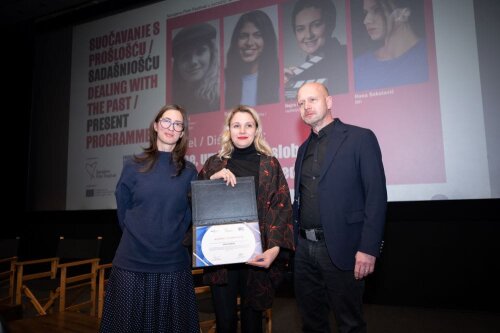
Letter from Adana, in solidarity with earthquake victims
Following the disastrous earthquake in Turkey and Syria on February 6th, our dear colleague İlke Şanlıer Yüksel wrote the heartbreaking letter below to describe the current situation and how it has affected the lives of all inhabitants of the area. We stand in solidarity with all victims.
February 10, 2023
Dear friends, colleagues and comrades,
Thank you all very much for your messages of support. My name is İlke Şanlıer Yüksel. I am an associate professor at the Department of Radio, Cinema and Television at Çukurova University, Adana, Turkey. I haven't slept for days, so forgive me if my English is not perfect. I don't need to tell you the gravity of the situation here, you will already have seen the news images, and I know are already doing all that you can: but believe me, the experience of actually being here is unimaginable. Maraş and Hatay - these two cities have been levelled to the ground. The destruction is so immense that I am not sure if there is even the slightest possibility of reconstruction.
Adana, the city where I live, was the least affected, but even here one third of the multi-storey buildings in the Çukurova district (population 360 thousand) were heavily damaged. It is impossible to enter the houses. This area is known as North Adana. The ex-mayor Aytaç Durak, who served for more than 20 years, opened this area for rapid construction at high profit. Almost all of the buildings date from after the 1999 earthquake and the resulting regulations, but they were clearly not built in accordance with those regulations. Sarıçam district, which also grew in the last 7-8 years under MHP ex-mayor Hüseyin Sözlü, has high-rise buildings and is in a similar situation. There are brand new buildings, still with PVC coatings on the windows and no people living in them, and they are cracked down the middle. This is the direct result of systemic corruption on an immense scale. Everyone in Adana is on the streets as there are warnings of another earthquake. An incredible number of buildings are damaged. There is no end to this dishonesty.
In the face of institutional incompetence, our students and graduates are trying to organise their own ways to bring aid. For example, Samandağ, Hatay’s district, still cannot be reached by land. There is no electricity, no fuel. Supplies are exhausted, and there is no drinkable water. They carry water, supplies, and power banks to Samandağ by boat from Adana Karataş. Yesterday, we tried to get permission from the Coast Guard; luckily we got permission, they will also deliver diesel oil by boat so that people can find a way to get out with vehicles. Isn't this extraordinary and awful? The state should be able to evacuate people by ship, but here it falls to a small group of young people. My student Ümit from Samandağ has been digging up dead bodies by hand for days. He is not allowed to bury them, because the prosecutor is supposed to come and identify the bodies, and so far has not made it there.
We've been giving everything we have in aid for days. The suppliers we know in Adana are distributing the goods in their warehouses. A group of my friends from the faculty are trying to supply baby nappies and formula milk to Adana City Hospital and the Faculty of Medicine. This is one of the less damaged cities, where we are told the health system is functioning perfectly. My sister has not slept for days, she cooks for people who have not been able to go home for days. My brother-in-law is a civilian search and rescue worker, working in the rubble in İskenderun and Hatay.
One of our colleagues in the department went into her damaged house to collect some belongings, and the house collapsed on her in the second earthquake. Fortunately, she was rescued, but now she has no home. Today, we got the news that one of our student’s and his family’s bodies were removed from that collapsed building on the fifth day. Almost all of our students are working class people from poorer families in Adana and the neighbouring provinces. Dozens of them have lost their homes and families: some have lost their lives. We don't know yet if the dormitories are in a condition to provide shelter. We don’t know whether we’ll be able to start the semester at some point.
Yesterday, two of my students called from Hatay. They don't have even a lira in their pockets: there are no ATMs, no banks, not even the municipality building, which has collapsed. Pervin, another student, is blind, and her mother has a severe chronic heart disease. Her father used to bring Pervin to school every day and pick her up in the evening. For 4 days, we have repeatedly contacted search and rescue, we have found solutions, we have been to the wreckage many times, but the rescuers could not enter the wreckage because they did not have working machines. Last night Pervin’s father's body was found.
Today I am writing to you in response to Pervin's cry: "I beg you, teacher, I beg you, bring my father to me". Pervin is just one of the young ones who are affected. There are tens of thousands, hundreds of thousands of children and young people in this situation.
I don't know how to bear this pain.
I wanted to tell you why I wrote this, both to pour my heart out in a safe place and to tell you that this road will be so long and that help will be needed for years to come. That's why your messages of support are very valuable to us. I am not asking for anything today, but there will be times when we, personally, can’t keep up anymore, and so then I will ask. I am very, very sad, angry, and enraged. Most of all, I am sorry for the remorse I feel because I am worried about the future of my own child and my nephew, while all this is happening.
In solidarity,
İlke
'Cinema in the Arab World: New Histories, New Approaches', a new book by Philippe Meers, Ifdal Elsaket and Daniel Biltereyst
Philippe Meers (ViDi), Ifdal Elsaket and Daniel Biltereyst are pleased to announce the launch of their new book Cinema in the Arab World: New Histories, New Approaches (Bloomsbury, 2023).
Cinema in the Arab world has been the subject of varied and rigorous studies, but most have focused on films as text, providing in-depth analyses of plot, style, ideologies, or examination of the biographies of prominent directors or actors.
This innovative new volume shifts the focus on Arab cinema off-screen, to examine the histories, politics, and conditions of distribution, exhibition, and cinema-going in the Arab world. Through broadening the frame of study beyond the screen, the book widens understanding of the cinema, not merely as a collection of films-as-texts, but as a site of cultural and political contestation in the Arab world.
Divided into two sections, and guided by interdisciplinary considerations, the contributors examine historical and contemporary issues of Arab cinema in terms of the experience of movie-going and filmmaking. They examine the networks of distribution and exhibition, as well as the contested and multiple meanings that the cinema embodied through diverse historical periods and geographical locations. Part I focuses on new histories of Arab cinema in terms of film production, distribution, exhibition and audience's experiences of cinema-going. Part II deals with more recent issues within scholarship on Arab cinema such as issues of politics, economics, ideologies, as well as issues related to Arab movies' international circulation and screenings at festivals. Together, the chapters enrich our understanding of the cinema in the Arab world, showing how deeply embedded it is within its social, political, and economic contexts.
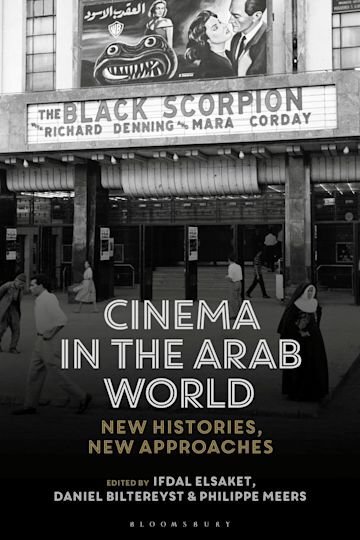
Symposium 'The Art and Science of Visual Research'
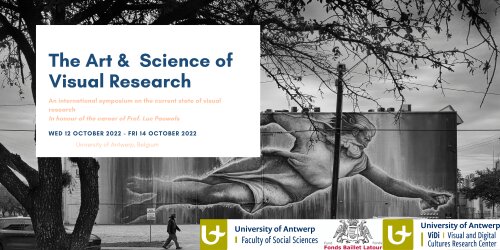
In the autumn of 2022, the Visual and Digital Cultures Research Center (ViDi), University of Antwerp, hosted the first international symposium on The Art and Science of Visual Research (ASVR). This event constituted the peak of celebrations for the career of Prof. dr. Luc Pauwels, who became an emeritus in October 2022.
Bringing together some of the most outstanding scholars in the field of visual studies and visual research, the symposium builds upon an integration of emerging and iconic voices of practitioners, methodologists, and theoreticians alike, all united around a common interest: the visual.
Different disciplinary traditions and practices were brought into dialogue: visual and digital culture, visual sociology and visual anthropology, science and technology studies, documentary photography, ethnographic film, and artificial intelligence.
Speakers
- Richard Chalfen (Temple University, USA)
- Marina Ciampi (Università Sapienza, Rome, IT)
- Rebekah Cupitt (Birkbeck University, UK)
- Paolo Favero (University of Antwerp, BE)
- Annalisa Frisina (Università di Padova, IT)
- John Grady (Wheaton College, USA)
- Paul Hockings (editor Visual Anthropology, USA)
- Allison Jablonko (co-founder Society for Visual Anthropology, AAA, USA)
- Asko Lehmuskallio (University of Tampere, FI)
- Tito Marci (Università Sapienza, Rome, IT)
- Scott McQuire (Melbourne University, AUS)
- Luc Pauwels (University of Antwerp)
- Mattijs van de Port (University of Amsterdam, NL)
- Katrien Pype (KU Leuven, BE)
- Jon Wagner (University of California, USA)
Programme
Start of programme Wednesday Oct 12th, 9:30 AM
End of programme Friday Oct 14th,12:30 PM
New ViDi collaboration with Sapienza - Università di Roma
On Friday 20 May 2022, ViDi formalized a new collaboration with the research group Unità di ricerca visuale of the Dipartimento di Scienze Sociali ed Economiche of Sapienza – University di Roma. The research partnership also covers a full-fledged Erasmus exchange to be used by MA students, PhD researchers and professors alike.
Professors Luc Pauwels and Paolo Favero inaugurated the collaboration with a keynote on visual methods.
ViDi's contact in Rome is Prof. Marina Ciampi, Head of the Visual Research Unit at the Department of Social Sciences and Economics, Sapienza University of Rome.
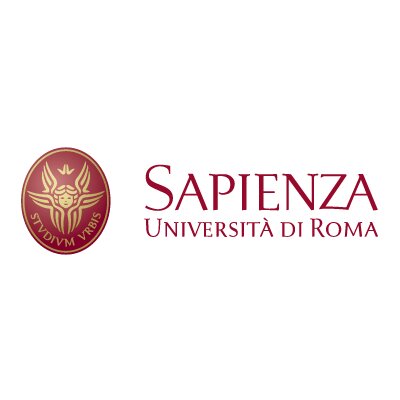
New EU-funded Project: Adana Cinema Heritage
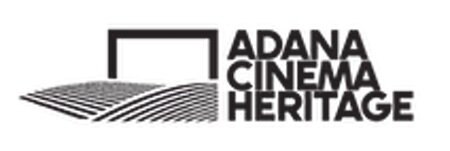
‘Dialogue for Cinema as Cultural Heritage: Identification, Recognition and Community-based Inventory of Cinemas as the Intangible Cultural Heritage of Adana via Cross-border dialogue’, a project funded by EU CCU-II, is a joint academic and civil society project on cinema history in the Turkish city of Adana. Children and youngsters in Adana (and in a second order in Ghent and Antwerp) will be involved in data collection, analysis and valorization with regard to Adana’s rich cinema history. The project promises to be innovative in the field of film and cinema studies and media history at large, mainly because it brings in types of research and valorization which are profoundly rooted in civil society. Through surveys and oral histories on cinemagoing experiences in Adana, and archival work on Adana's cinema history, this project will result in academic outputs ranging from publications to workshops and conferences, as well as a digital platform for mapping cinemas and memories of cinemagoing in Adana as a form of intangible cinema heritage, but also cinema history tours, the training of youngsters as tour guides, and film screenings for local communities.
The project is a collaboration of the youth and children’s rights organization Flying Balloon Children and Youth Association, Çukurova University in Adana, Turkey, the University of Antwerp (Philippe Meers) and Ghent University (Daniel Biltereyst) in Belgium.
For updates of the project, see the Adana Cinema Heritage website.
See also: http://cinemacitycultures.org/adana/.
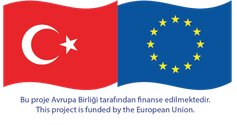
SCMS Awards 2021: Honorable Mention for ViDi member Vesi Vuković in the Central/East/South European Cinemas Outstanding Essay Award
The Society of Cinema and Media Studies awarded an Honorable Mention to our voluntary ViDi member Vesi Vuković in the competition for Central/East/South European Cinemas Outstanding Essay Award. She was awarded the prize for the chapter, 'Treacherous Women: Representation of Female Characters as Traitors of the Nation in Partisan-themed Yugoslav New Films,' published in the volume 'Balkan Cinema and the Great Wars: Our Story' (Peter Lang, 2020). In her article, Vuković explores Yugoslav novi film (New Film, 1961–1972) representations of female characters that did not conform to the norms of chastity or patriotism imposed on women during the Second World War. The article contributes to the Yugoslav film studies field by detecting the recurrence of castigation of female characters for active sexuality.
Symposium: 'On/Off Screen: The Other Histories of Cinema in Latin America/Las otras historias del cine en América Latina'
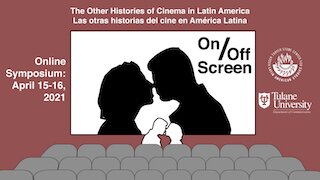
Co-organized by ViDi, CIMS (UGent) and Tulane University, the online symposium 'On/Off Screen. The Other Histories of Cinema in Latin America/Las otras historias del cine en América Latina' will be held on 15 and 16 April 2021. The symposium explores practices of film distribution, exhibition and cinemagoing in Latin America. Over the past decade, the receiving end of the film chain, including patterns of film distribution and exhibition and the experiences of cinemagoers, has received increasing scholarly attention. Although this turn has made inroads beyond Eurocentric, Anglo-American limits, there is still a need to highlight other important cinematographic regions, especially Latin America. The symposium brings together scholars working in/on this domain from Brazil, Mexico, Chile, Colombia, Argentina, Ecuador, Cuba, and the US, etc to engage in conversations about film culture across the Western hemisphere. For more information and registration, please visit the symposium website.
'European Film Remakes', a new book co-edited by Gertjan Willems
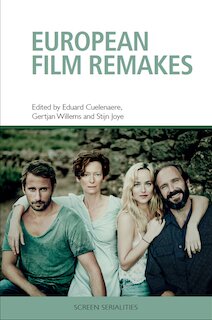
ViDi member Gertjan Willems published a new book ‘European Film Remakes’ with Edinburgh University Press. Co-edited with Eduard Cuelenaere and Stijn Joye (Ghent University), this book is the first to discuss film remakes in a European context. Offering a variety of historical, contemporary, theoretical and empirical approaches to remakes, the book is illustrated by a wide range of case studies from across Europe, including films like A Bigger Splash, Open Your Eyes and Perfect Strangers. Although commonly understood as a typical Hollywood practice, this book demonstrates how film remakes are, and always have been, a significant part of the European film culture and industry. You can read the introduction to the book here.
'Image-Making-India: Visual Culture, Technology, Politics', a new book by Paolo Favero
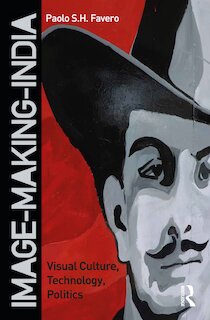
Paolo Favero's new book 'Image-Making-India' explores the evolving meaning of images in a digital landscape from the vantage point of contemporary India. Building upon long-term ethnographic research among image-makers in Delhi, Mumbai and other Indian cities, the author interrogates the dialogue between visual culture, technology and changing notions of political participation. The book explores selected artistic experiences in documentary and fiction film, photography, contemporary art and digital curation that have in common a desire to engage with images as tools for social intervention. These experiences reveal images’ capacity not only to narrate and represent but also to perform, do and affect. Particular attention is devoted to the 'digital', a critical landscape that offers an opportunity to re-examine the significance of images and visual culture in a rapidly changing India. This volume will be of particular interest to scholars of visual and digital anthropology and cultures as well as South Asian studies.
Launch of the Cinema Belgica platform at Film Fest Gent 2020
On Thursday 15 October 2020 at Film Fest Ghent, Ghent University, the University of Antwerp and the University of Amsterdam launch the new open-access data platform Cinema Belgica and the CINECOS database. The platform facilitates the understanding, exploration and analysis of cinema as dominant public medium and as popular culture. In addition to an encyclopedic wealth of information regarding the production, distribution, exhibition, programming and censoring of films in Belgium since 1896, Cinema Belgica also offers advanced research possibilities that allow to study Belgian cinema history.
'De verbeelding van de leeuw,' a new book by Gertjan Willems
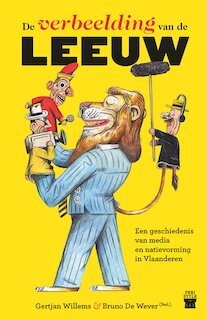
ViDi member Gertjan Willems edited a book together with Bruno De Wever (dept. of History, Ghent University) on media and nation-building in Flanders. The Dutch-language book ‘De verbeelding van de leeuw: Een geschiedenis van media en natievorming in Vlaanderen’ comprises 11 chapters and brings together for the first time media and communication scholars, historians, political scientists, linguists, and literature scholars to tell an interdisciplinary story about the role of media in Flemish nation-building.
This publication is GPRC-labeled (Guaranteed Peer-Reviewed Content). For more information and to purchase the book, please visit the publisher’s website: www.peristyle.be
Lumumba in the Arts, a new edited volume by Matthias De Groof
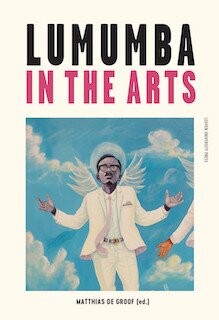
Lumumba in the Arts (2020), a new volume edited by Matthias De Groof is out now.
Lumumba as a symbol of decolonisation and as an icon in the arts
It is no coincidence that a historical figure such as Patrice Emery Lumumba, independent Congo’s first prime minister, who was killed in 1961, has lived in the realm of the cultural imaginary and occupied an afterlife in the arts. After all, his project remained unfinished and his corpse unburied. The figure of Lumumba has been imagined through painting, photography, cinema, poetry, literature, theatre, music, sculpture, fashion, cartoons and stamps, and also through historiography and in public space. No art form has been able to escape and remain indifferent to Lumumba. Artists observe the memory and the unresolved suffering that inscribed itself both upon Lumumba’s body and within the history of Congo. If Lumumba – as an icon – lives on today, it is because the need for decolonisation does as well.
Rather than seeking to unravel the truth of actual events surrounding the historical Lumumba, this book engages with his representations. What is more, it considers every historiography as inherently embedded in iconography. Film scholars, art critics, historians, philosophers, and anthropologists discuss the rich iconographic heritage inspired by Lumumba. Furthermore, Lumumba in the Arts offers unique testimonies by a number of artists who have contributed to Lumumba's polymorphic iconography, such as Marlene Dumas, Luc Tuymans, Raoul Peck, and Tshibumba Kanda Matulu, and includes contributions by such highly acclaimed scholars as Johannes Fabian, Bogumil Jewsiewicky, and Elikia M’Bokolo.
Contributors: Balufu Bakupa-Kanyinda (artist), Karen Bouwer (University of San Francisco), Véronique Bragard (UCLouvain), Piet Defraeye (University of Alberta), Matthias De Groof (scholar/filmmaker), Isabelle de Rezende (independent scholar), Marlene Dumas (artist), Johannes Fabian (em., University of Amsterdam), Rosario Giordano (Università della Calabria), Idesbald Goddeeris (KU Leuven), Gert Huskens (ULB), Robbert Jacobs (artist), Bogumil Jewsiewicki (em., Université Laval), Tshibumba Kanda Matulu (artist), Elikia M’Bokolo (EHESS), Christopher L. Miller (Yale University), Pedro Monaville (NYU), Raoul Peck (artist), Pierre Petit (ULB), Mark Sealy (Autograph ABP), Julien Truddaïu (CEC), Léon Tsambu (University of Kinshasa), Jean Omasombo Tshonda (Africa Museum), Luc Tuymans (artist), Mathieu Zana Etambala (AfricaMuseum)
This publication is GPRC-labeled (Guaranteed Peer-Reviewed Content).
For more information and to purchase the book, visit the publication's website.
The SAGE Handbook of Visual Research Methods (second edition, revised and expanded)
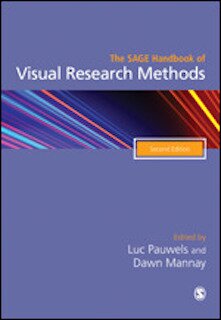
The second, thoroughly revised and expanded, edition of The SAGE Handbook of Visual Research Methods (2019) by Luc Pauwels and Dawn Mannay (Cardiff University) presents a wide-ranging exploration and overview of the field today. As in its first edition, the Handbook does not aim to present a consistent view or voice, but rather to exemplify diversity and contradictions in perspectives and techniques. The selection of chapters from the first edition have been fully updated to reflect current developments. New chapters to the second edition cover key topics including picture-sorting techniques, creative methods using artefacts, visual framing analysis, therapeutic uses of images, and various emerging digital technologies and online practices. At the core of all contributions are theoretical and methodological debates about the meanings and study of the visual, presented in vibrant accounts of research design, analytical techniques, fieldwork encounters and data presentation.
This handbook presents a unique survey of the discipline that will be essential reading for scholars and students across the social and behavioural sciences, arts and humanities, and far beyond these disciplinary boundaries.
The Handbook is organized into seven main sections:
PART 1: FRAMING THE FIELD OF VISUAL RESEARCH
PART 2: VISUAL AND SPATIAL DATA PRODUCTION METHODS AND TECHNOLOGIES
PART 3: PARTICIPATORY AND SUBJECT-CENTERED APPROACHES
PART 4: ANALYTICAL FRAMEWORKS AND PERSPECTIVES
PART 5: MULTIMODAL AND MULTISENSORIAL RESEARCH
PART 6: RESEARCHING ONLINE PRACTICES
PART 7: COMMUNICATING THE VISUAL: FORMATS AND CONCERNS
The Routledge Companion to New Cinema History (2019)
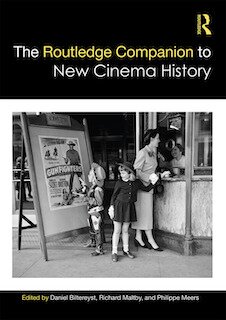
The Routledge Companion to New Cinema History (2019) by Daniel Biltereyst, Richard Maltby and Philippe Meers presents the most recent approaches and methods in the study of the social experience of cinema, from its origins in vaudeville and traveling exhibitions to the multiplexes of today.
Exploring its history from the perspective of the cinemagoer, the study of new cinema history examines the circulation and consumption of cinema, the political and legal structures that underpinned its activities, the place that it occupied in the lives of its audiences and the traces that it left in their memories. Using a broad range of methods from the statistical analyses of box office economics to ethnography, oral history, and memory studies, this approach has brought about an undisputable change in how we study cinema, and the questions we ask about its history. This companion examines the place, space, and practices of film exhibition and programming; the questions of gender and ethnicity within the cinematic experience; and the ways in which audiences gave meaning to cinemagoing practices, specific films, stars, and venues, and its operation as a site of social and cultural exchange from Detroit and Laredo to Bandung and Chennai. Contributors demonstrate how the digitization of source materials and the use of digital research tools have enabled them to map previously unexplored aspects of cinema’s business and social history and undertake comparative analysis of the diversity of the social experience of cinema across regional, national, and continental boundaries.
With contributions from leading scholars in the field, The Routledge Companion to New Cinema History enlarges and refines our understanding of cinema’s place in the social history of the twentieth century.
The Present Image, a new book by Paolo Favero
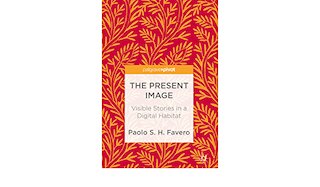
A new book by Paolo Favero, The Present Image: Visible Stories in a Digital Habitat (2018, Palgrave Macmillan) is out now.
The Present Image explores the world of images in the contemporary, increasingly digitized, habitats of the world. Moving across a theoretical spectrum that brings visual and digital culture in touch with anthropology, political theory, phenomenology and art-history, and based on the author’s practice-based involvement with images, the book argues against the idea of the digital as a revolution in the world of images. “Present images” are the result of a dialectic between the material and the immaterial, the manual and the mechanical, the visible and the audible, the old and the new. Offering an analysis containing simultaneously elements of timeliness and timelessness, the book addressed practices such as VR and 360 degrees, iDocs and action cameras in a dialogue with classical art, religious iconography, early photography and contemporary art. In the final chapter the book explores the significance of images and image-making in the context of dying, mourning and living.
Eva Theunissen at UWE Bristol
ViDi-member Eva Theunissen was granted the ActUA-Prijs 2018. This prize is awarded to master’s students and PhD students who aspire a research stay abroad. Eva, who holds an FWO-funded PhD scholarship, will be hosted for a period of three months at the Digital Cultures Research Centre, part of the University of the West of England (UWE) in Bristol.
Matthias De Groof talks about Decolonization at Tampere Film Festival
On Thursday, March 8 at 4pm, the Kone Foundation will host a talk session about decolonisation, which can be defined as the dismantlement of visibile and invisibile power structures, at Tampere after the “International Competition 3” screening. Decolonisation is a joint theme of the short films to be seen in the screening.
After the film there will be a discussion about decolonisation with a researcher and two film directors. Matthias de Groof is a research fellow in the University of Helsinki and has strong interest in film theory and film making, Congo and postcolonialism. Director Libby Hakaraia is the founder of Maoriland Film festival in New Zealand and has her film “The lawnmower men of Kapu” at the Tampere Film Festival. The discussion also includes director Daniel Gräbner, whose documentary “Das Projekt” is presented at this screening. They will be interviewed by journalist Monica Gathuo. She is a producer at Ruskeat Tytöt – the first ever media for and by brown people in Finland – and she also works in the ARMA project, funded by Kone Foundation. ARMA combines theory and practice to develop creative uses of digital media, pedagogy and arts as means to promote anti-racism knowledge and values in Finland.
For more info, click here.
Matthias De Groof at Helsinki University
Vidi-Member Matthias De Groof was granted a Postdoctoral fellowship in the Arts at the Collegium for Advanced Studies at one of the top 1 % of world's research universities: Helsinki University.
Ali Baharlou awarded at Tehran International Short Film Festival
PhD in the Arts student Ali Baharlou (supervisors Philippe Meers ViDi, UA and Tom De Smedt EMRG, Sint-Lucas Antwerp) has won the Best Religion Short Film at Tehran International Short Film Festival.
For more info and all winners, click here.
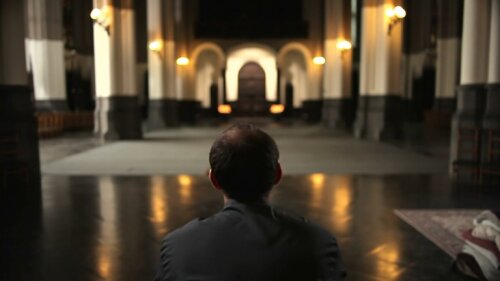
Ethnoally listed by MIT's DocuBase
Ethnoally, the digital tool and mobile application that enables researchers to create and organize multimodal field notes for ethnographic studies is now listed by MIT's DocuBase. Ethnoally has been created at ViDi in collaboration with DeustoTech.
Ethnoally is a digital research tool designed for coordinating those multiple acts of “serendipitous ethnography” that can be enacted today in many variable contexts with the help pf smartphones. It was originally ideated by Paolo S. H. Favero with funding from FWO and realized by Alfonso Bahillo (DeustoTech Fundación - University of Deusto). Eva Theunissen has worked on user experience and conducted the first rounds of structured ethnographic testing and London-based visual artist Ali Zaidi had also worked on user experience and developed some aesthetic features.

Launch 'Cinema City Cultures' website
The Cinema City Cultures website, which is now being launched, is linked to a network of collaborative research projects examining and questioning the interconnection between cinema, modernity and urbanity. The network brings together researchers who deal with this topic by using empirical research on urban cinematic practices and experiences. Inspired by a new cinema history approach, projects within the Cinema City Cultures network concentrate on cinematic place and space, programming and audience experience. Bringing together projects from different countries and continents, the network fosters inter- and multidisciplinarity, international collaborative and comparative research, as well as the use of new digital research approaches. Cinema City Cultures is an initiative by Daniel Biltereyst and Philippe Meers. For an overview of projects and researchers, see here.
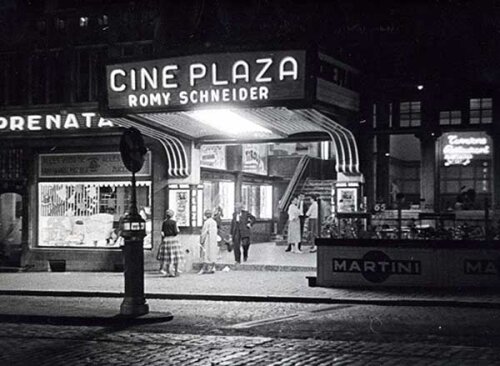
One-Day Workshop: Crafting the Feature of the Visual
On Friday 13th of September 2019, Paolo SH Favero (University of Antwerp) and Janine Prins (University of Leuven) will be hosting a workshop on the future of the visual essay in collaboration with VANEASA (the visual anthropology network of the European Association of Social Anthropologists (EASA) and its journal AnthroVision. The workshop will take place in room M002 at De Meermine, Sint-Jacobsstraat 2, 2000 Antwerpen.
The aim is to explore the way in which new (mainly digital) technologies are contributing to the creation of new ways for publishing social scientific research.
The workshop will focus on creative contributions from early career scholars that can help us identify new ways of thinking about and making visual essays (videoclips, online archives, smartphone applications, virtual, mixed and augmented reality, etc.)
The selected papers will receive feedback from senior scholars in the area. Among them Peter I. Crawford (Univ. of Tromsö), Beate Engelbrecht (Univ. of Göttingen), Michaela Schäuble (Univ. of Bern) Mattijs van de Port (Univ. of Amsterdam), Carolina Cambre (Concordia University), Luc Pauwels (University of Antwerp), Janine Prins (University of Leuven) and Paolo SH Favero (University of Antwerp).
The workshop will develop along 8 presentations distributed over the course of the day.
Program
8:30 - 9:00 - introduction (Paolo SH Favero and Janine Prins)
9:00 to 10:30 - Anne Chahine presents (Janine Prins discussant)
Christine Moderbacher presents(Peter Crawford discussant)
10:30 - 11:00 - coffee break
11:00 - 12:30 - Felice Kertudo presents (Caroline Cambre discussant)
Joanna Sleigh presents (Luc Pauwels discussant)
12:30 - 13:30 - lunch break
13:30 - 15:00 - Rob Eagle presents (Paolo SH Favero discussant)
Sabra Thorner presents (Beate Engelbrecht discussant)
15:00 - 15:30 - coffee break
15:30 - 17:00 - Sandro Simon presents (Mattijs van de Port discussant)
Shirley van der Maarel presents (Giulia Battaglia discussant)
17:00 - 18:00 - group discussion and closing remarks
For more information send and e-mail to Paolo SH Favero: paolo.favero@uantwerpen.be